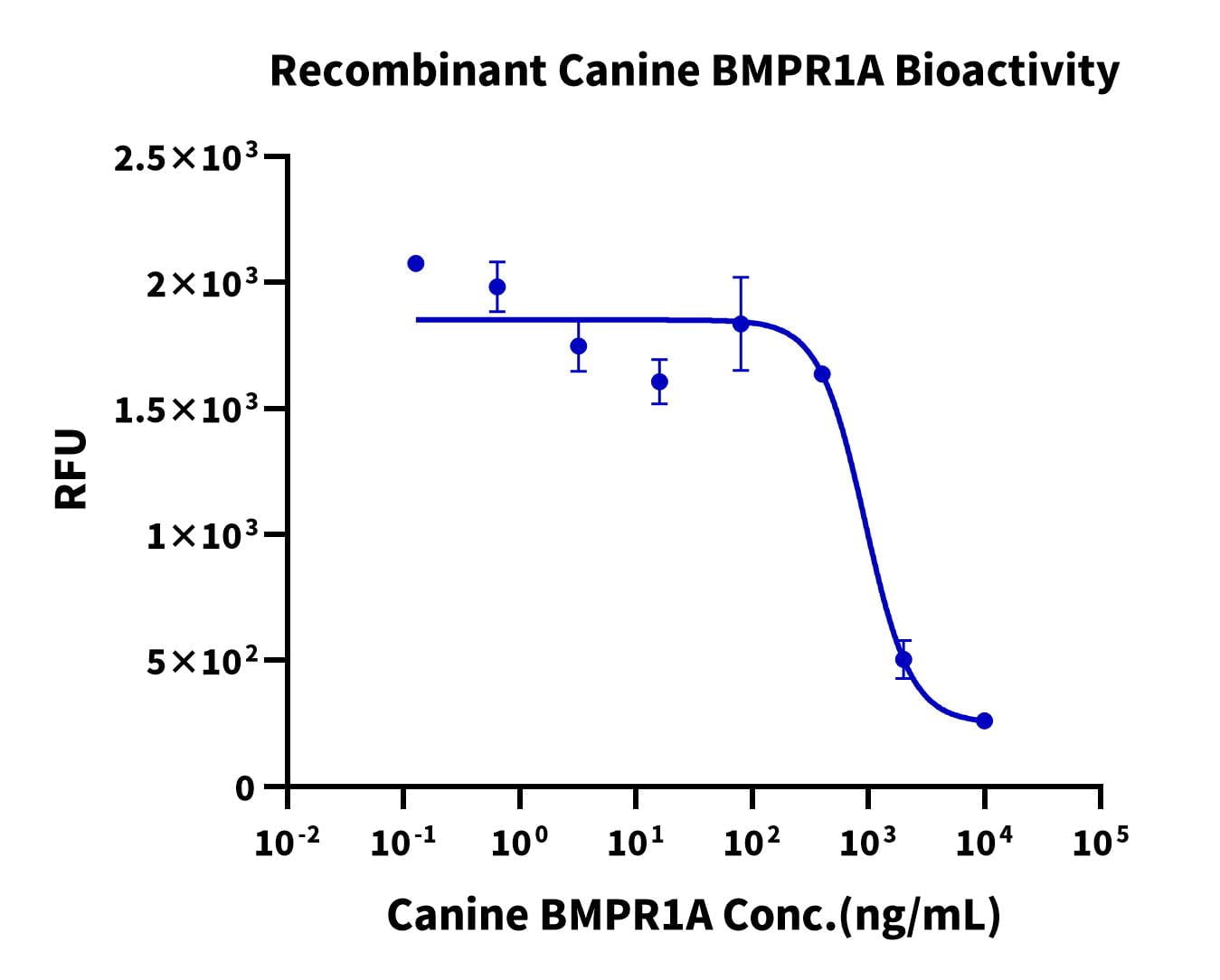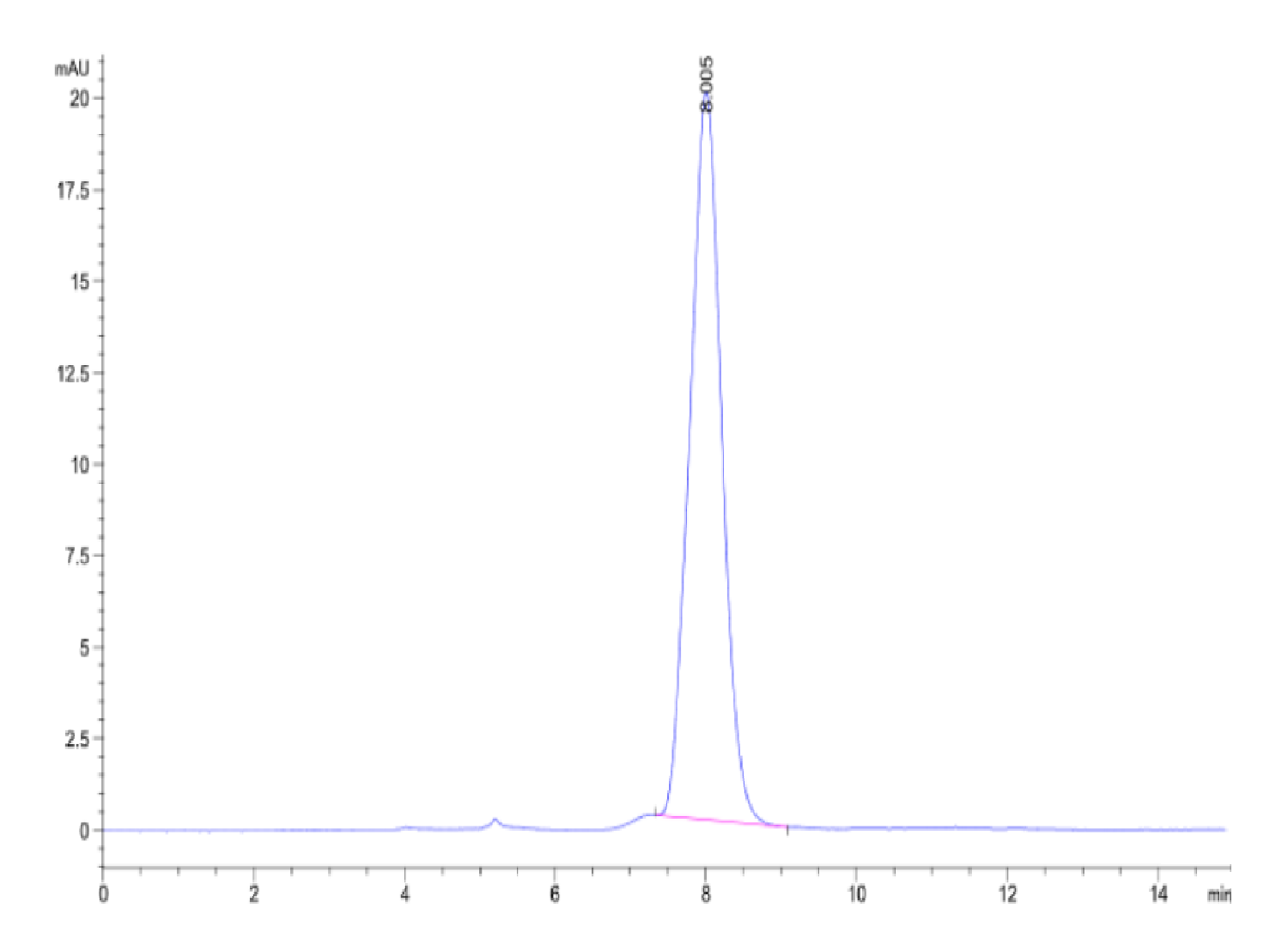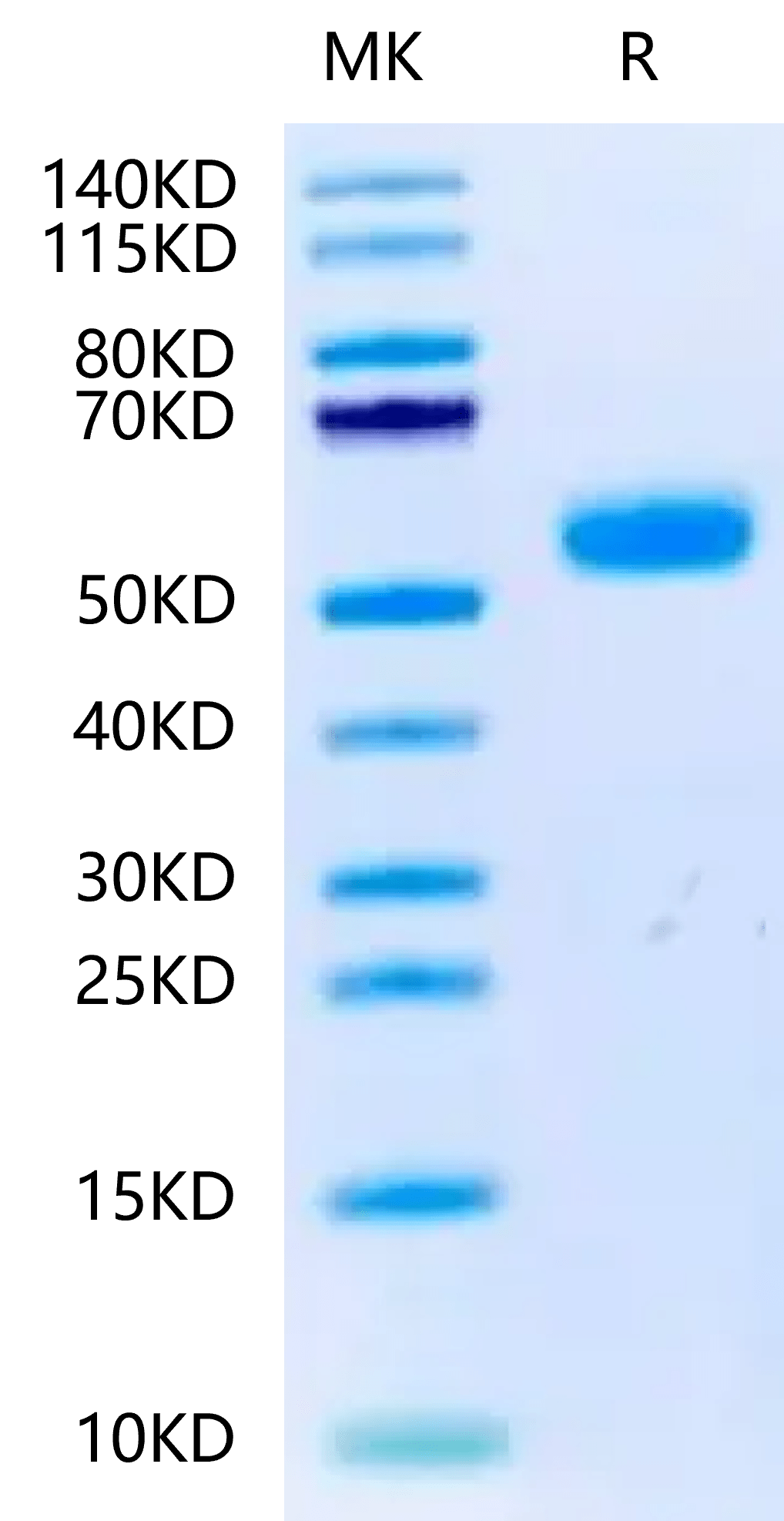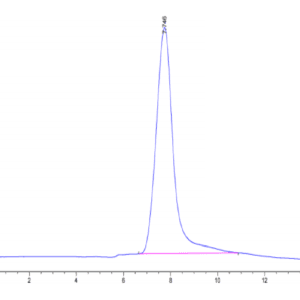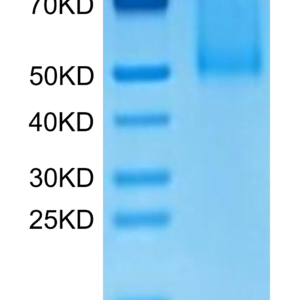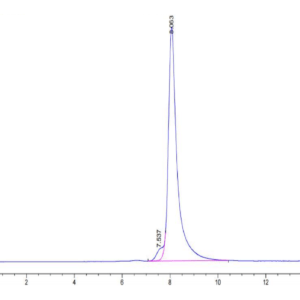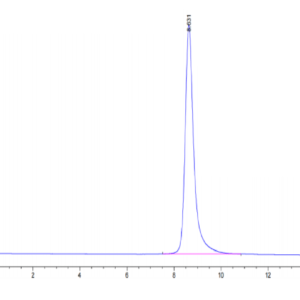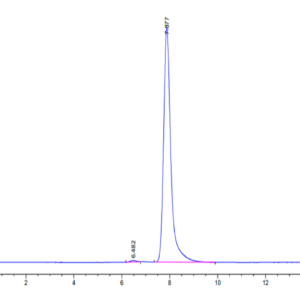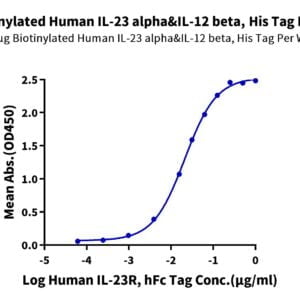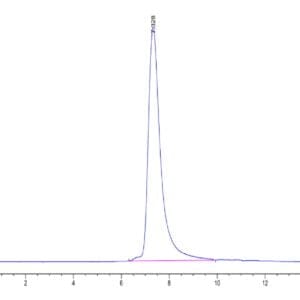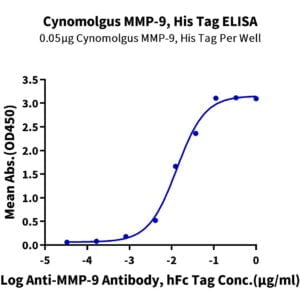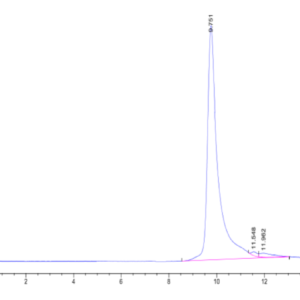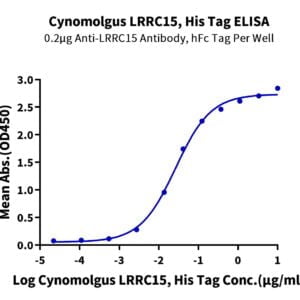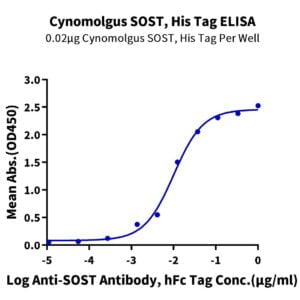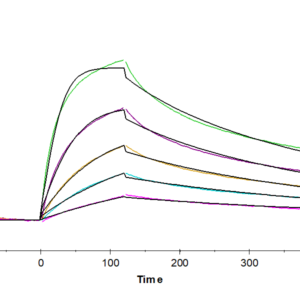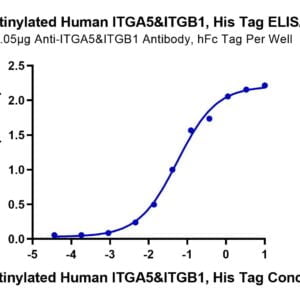| Weight | 1 lbs |
|---|---|
| Dimensions | 9 × 5 × 2 in |
| accession | NP_001138622 |
| express system | HEK293 |
| product tag | C-hFc |
| purity | > 95% as determined by Tris-Bis PAGE;> 95% as determined by HPLC |
| background | The type IA bone morphogenetic protein receptor (Bmpr1a), encoded by 11 exons and spanning about 40 kb on chromosome 14 in mice and chromosome 10 in human (Derynck & Feng, 1997; Mishina, Hanks, Miura, Tallquist, & Behringer, 2002), is an essential receptor for BMP signaling. |
| molecular weight | The protein has a predicted MW of 40.94 kDa. Due to glycosylation, the protein migrates to 50-65 kDa based on Tris-Bis PAGE result. |
| available size | 100 µg, 500 µg |
| endotoxin | Less than 1EU per μg by the LAL method. |
Canine BMPR1A/ALK-3 Protein 2425
$345.00 – $1,150.00
Summary
- Expression: HEK293
- Active: Yes (cell based assay)
- Amino Acid Range: Gln24-Arg152
Canine BMPR1A/ALK-3 Protein 2425
| protein |
|---|
| Size and concentration 100, 500µg and lyophilized |
| Form Lyophilized |
| Storage Instructions Valid for 12 months from date of receipt when stored at -80°C. Recommend to aliquot the protein into smaller quantities for optimal storage. Please minimize freeze-thaw cycles. |
| Storage buffer Shipped at ambient temperature. |
| Purity > 95% as determined by Tris-Bis PAGE |
| target relevance |
|---|
| The type IA bone morphogenetic protein receptor (Bmpr1a), encoded by 11 exons and spanning about 40 kb on chromosome 14 in mice and chromosome 10 in human (Derynck & Feng, 1997; Mishina, Hanks, Miura, Tallquist, & Behringer, 2002), is an essential receptor for BMP signaling. |
| Protein names Bone morphogenetic protein receptor type-1A (BMP type-1A receptor) (BMPR-1A) (EC 2.7.11.30) (Activin receptor-like kinase 3) (ALK-3) (Serine/threonine-protein kinase receptor R5) (SKR5) (CD antigen CD292) |
| Protein family Protein kinase superfamily, TKL Ser/Thr protein kinase family, TGFB receptor subfam |
| Mass 60198Da |
| Function On ligand binding, forms a receptor complex consisting of two type II and two type I transmembrane serine/threonine kinases. Type II receptors phosphorylate and activate type I receptors which autophosphorylate, then bind and activate SMAD transcriptional regulators. Receptor for BMP2, BMP4, GDF5 and GDF6. Positively regulates chondrocyte differentiation through GDF5 interaction. Mediates induction of adipogenesis by GDF6. May promote the expression of HAMP, potentially via its interaction with BMP2 (By similarity). {ECO:0000250|UniProtKB:P36895}. |
| Catalytic activity CATALYTIC ACTIVITY: Reaction=ATP + L-threonyl-[receptor-protein] = ADP + H(+) + O-phospho-L-threonyl-[receptor-protein]; Xref=Rhea:RHEA:44880, Rhea:RHEA-COMP:11024, Rhea:RHEA-COMP:11025, ChEBI:CHEBI:15378, ChEBI:CHEBI:30013, ChEBI:CHEBI:30616, ChEBI:CHEBI:61977, ChEBI:CHEBI:456216; EC=2.7.11.30; CATALYTIC ACTIVITY: Reaction=ATP + L-seryl-[receptor-protein] = ADP + H(+) + O-phospho-L-seryl-[receptor-protein]; Xref=Rhea:RHEA:18673, Rhea:RHEA-COMP:11022, Rhea:RHEA-COMP:11023, ChEBI:CHEBI:15378, ChEBI:CHEBI:29999, ChEBI:CHEBI:30616, ChEBI:CHEBI:83421, ChEBI:CHEBI:456216; EC=2.7.11.30; |
| Subellular location Cell membrane {ECO:0000250|UniProtKB:P36898}; Single-pass type I membrane protein {ECO:0000255}. Cell surface {ECO:0000250|UniProtKB:P36895}. |
| Tissues Highly expressed in skeletal muscle. |
| Structure Interacts with low affinity with GDF5; positively regulates chondrocyte differentiation (PubMed:24098149). Interacts with BMP4 (PubMed:8006002). Interacts with SCUBE3 (PubMed:33308444). Interacts with TSC22D1/TSC-22 (PubMed:21791611). Interacts with BMP2; the interaction may induce HAMP expression (PubMed:10881198, PubMed:15064755, PubMed:17295905, PubMed:18937504, PubMed:31800957). Interacts with BMP6 (PubMed:31800957). Interacts with heterodimers composed of BMP2 and BMP6 in vitro; the interaction may induce HAMP expression (PubMed:31800957). {ECO:0000269|PubMed:10881198, ECO:0000269|PubMed:15064755, ECO:0000269|PubMed:17295905, ECO:0000269|PubMed:18937504, ECO:0000269|PubMed:21791611, ECO:0000269|PubMed:24098149, ECO:0000269|PubMed:31800957, ECO:0000269|PubMed:33308444, ECO:0000269|PubMed:8006002}. |
| Post-translational modification Glycosylated. {ECO:0000250|UniProtKB:P36895}. |
| Target Relevance information above includes information from UniProt accession: P36894 |
| The UniProt Consortium |
Data
Publications
Publications
| pmid | title | authors | citation |
|---|---|---|---|
| We haven't added any publications to our database yet. | |||
Protocols
| relevant to this product |
|---|
Documents
| # | ||
|---|---|---|
| Please enter your product and batch number here to retrieve product datasheet, SDS, and QC information. | ||
